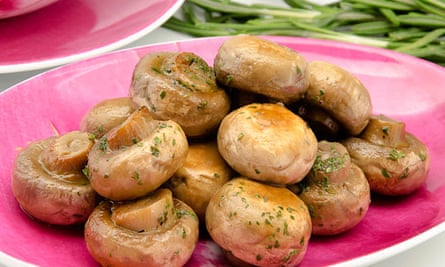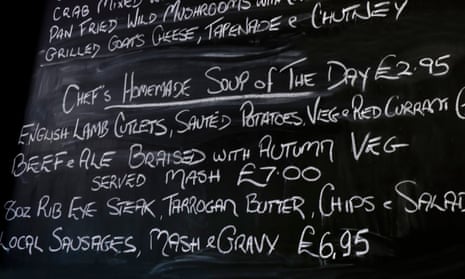Britain’s love affair with eating out has reached fever pitch. Earlier this month, Harden’s Restaurant Guide revealed a record-breaking 179 new London openings in 2015 (website Hot Dinners puts it even higher, at 240). This explosion poses a difficult question for guidebook makers: with the overall standard raised, should regional favourites that are no longer up to scratch be nudged out or should expectations be lowered in the provinces to maintain the wide geographic spread that readers expect? Tricky. Although, perhaps not nearly as tricky as deciding where to eat in a booming restaurant scene that shows absolutely no sign of slowing down.
As an inspector for restaurant guidebooks, I spend my life eating around the UK. Such vast choice means I need to quickly whittle options down before heading to a new region. Within seconds, I’ve culled the local curry house, trattoria and Chinese. With an ever-affordable formula available 364 days a year, these neighbourhood stalwarts serve a purpose, but mostly follow an identical business model of cash-and-carry buying and shortcut cooking. We all have our favourites, but you don’t need me to tell you the £5.99 lunch menu isn’t worth travelling for. So what is? There are plenty of obvious pointers, from reviews, awards won, multiple guide listings – but the surest way to find those lesser known places worth shouting about is reading between the lines of a restaurant’s menu.
See beyond seasonality
I know what you’re thinking. Seasonality, right? Well, sorry, but I’m not. Knowing what’s in season is not the same as knowing what’s good. I’ve had wonderful French asparagus in February and I know some great restaurants that blast-freeze superb raspberries for winter. Brilliant cooking is categorised by whatever is at its peak rather than in season.
Menu design and pompous language
The look and feel of a menu says far more. Stylised, heavily designed efforts covered in logos and pictures are not conceived with change in mind, whereas a stark, single typeface on flimsy A5 shows not laziness or amateurism, but a restaurant planning to alter what it serves in response to the best produce.
Beware pompous language. Where a menu lists “whole plaice” expect good plaice, but with “plaice coated gently in a light herb crumb and shallow fried in single estate extra-virgin olive oil”, expect anything but. “On a bed of”, “draped in”, “drizzled with” or even “crispy” and “smooth” are all glaring substitutes for quality that requires nothing but the most economical wording to stand out. Other red flags: breaded brie, garlic mushrooms, prawns and scallops at oddly low prices, a proliferation of balsamic vinegar, salmon rubbed with things, “famous” roasts and “grazing” boards of “nibbles” (try “snacks” instead, you’ll be pleasantly surprised).

Too much choice
Next, we have menu size. The less a kitchen has to prepare, the more attention can be lavished on dishes. A compact menu of about 20 options is most likely to reflect care, quality and good ingredients. And consider range. Most talented chefs have trained in colleges and brigades focused on French or British methods. How, then, can the average pub chef suddenly manage the geographic diversity of Thai red curry, crispy-duck spring rolls, BBQ ribs and stone-baked pizza? We should be wary of menus that imply such broad knowledge. It’s made possible only by food manufacturers churning out ready meals.
In the same way, where a single plate requires 10 components to be ready at the same time (and prices aren’t astronomical enough to pay 10 chefs), corners must be cut. Cluttered dishes can seem fun and daring to misguided cooks labouring under the mistaken belief that accolades are given for effort. The reality is more often ill-judged combinations and sloppy cooking.
Sourcing
Let’s forget more work, then, and start spotting the right kind of work. Buying (hard), butchering (harder). Making good use of (even harder) a whole animal is one example of the best kind of sourcing, so where something such as venison appears multiple times, as sausages, scotch egg, carpaccio, ragu, loin or haunch, we have a hint as to that kitchen’s standards and skill. Wild food, in fact, is a surefire indicator of care. The farmed likes of chicken breast, salmon steak or lamb shank can be bought on autopilot all year round, whereas red mullet, megrim sole or john dory reflect small-scale buying that relies on a talented kitchen. Game means the same: whether you like them or not, partridge, hare, teal and pigeon are not yet part of the wholesale supply chain that good restaurants shun. And the dreaded food manufacturers’ catalogues are pretty light on pigs’ heads, green papaya, duck hearts, choi sum, goat shoulders, puntarelle or chicken hearts, so while uncommon – or perhaps even off-putting – these ingredients are also strong indicators that everything is well cooked from scratch.
The final check
If a menu is giving all the right signs, I’ll check the chef’s and owner’s backgrounds; with the help of Google, suss out the size of restaurant – which tells me how many diners they’re aiming to serve (even a compact menu can be a disaster for 200 ever-turning tables); and, finally, I’ll match everything up to realistic, appropriate pricing (a £35, eight-course tasting menu from a cook fresh off two years at Frankie and Benny’s shouldn’t fill anyone with confidence). If everything aligns, I’m off for dinner.
So how do you read a menu? Are you shocked anyone could make such cutting discriminations prior to eating or do you pride yourself on ruthlessly separating the Michelins from the Maccy Ds?

Comments (…)
Sign in or create your Guardian account to join the discussion